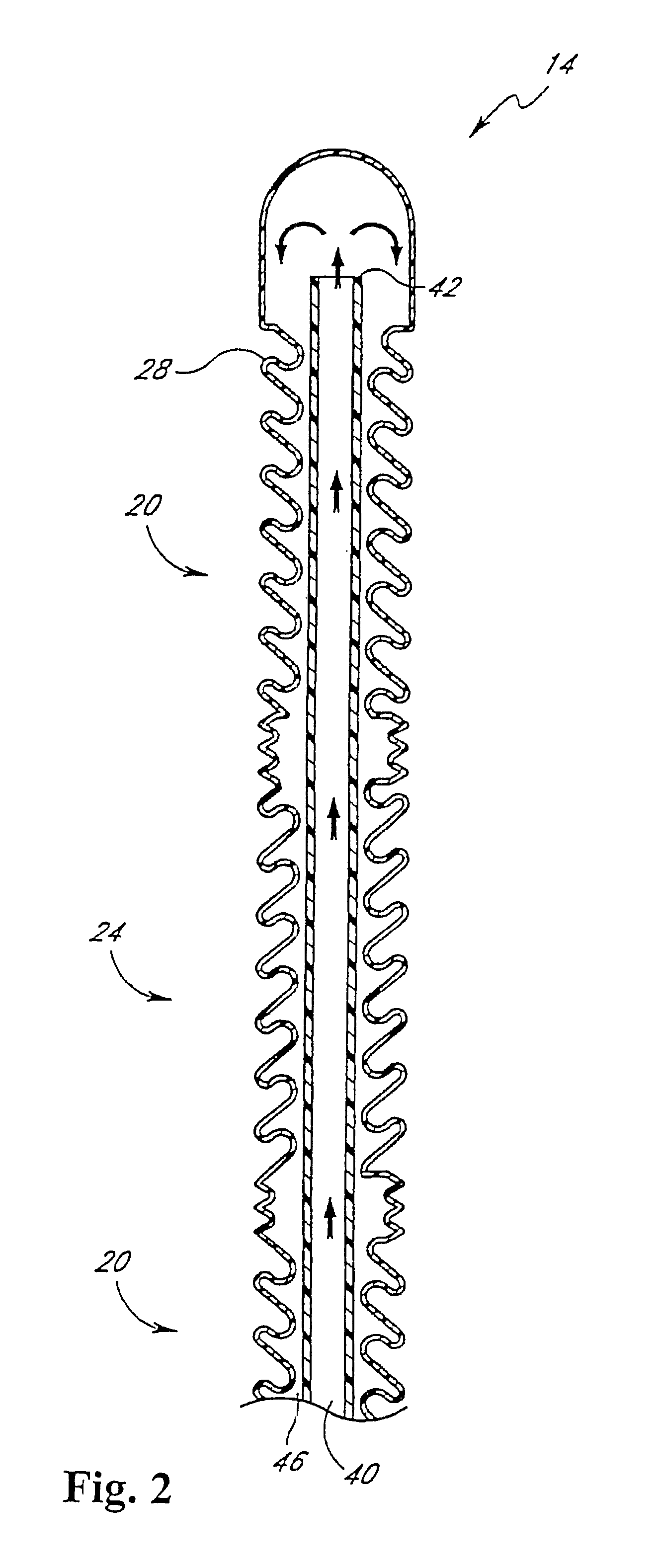Method for determining the effective thermal mass of a body or organ using a cooling catheter
a technology of effective thermal mass and cooling catheter, which is applied in the direction of catheter, contraceptive device, application, etc., can solve the problems of patient's threshold, patient's loss of ability to control his or her core temperature, and certain negative effects of total body hypothermia
- Summary
- Abstract
- Description
- Claims
- Application Information
AI Technical Summary
Problems solved by technology
Method used
Image
Examples
Embodiment Construction
In an animal study, whole body cooling was accomplished by inserting the catheter through the femoral vein and then through the inferior vena cava as far as the right atrium and the superior vena cava. Cooling was initiated by circulating a working fluid at a flow rate of 5 cc / sec. The temperature differential between the fluid entering the catheter and the fluid exiting the catheter was 17.degree. C. Accordingly, the power extracted by the catheter was 354 watts.
The body core temperature was measured through the esophagus. Twenty minutes after cooling was initiated, the rate at which the core temperature changed was measured over a period of about ten minutes, resulting in an average temperature change of about 10.degree. C. / hr.
From equation (3) above, the effective thermal mass is:
m=354 watts / (0.965 watts / kg .degree. C.)(10.degree. C. / hr)=37 kg
The total mass of the animal was 53 kg, and thus the effective mass was found to be 69% of the total mass.
Although various embodiments are ...
PUM
 Login to View More
Login to View More Abstract
Description
Claims
Application Information
 Login to View More
Login to View More - R&D
- Intellectual Property
- Life Sciences
- Materials
- Tech Scout
- Unparalleled Data Quality
- Higher Quality Content
- 60% Fewer Hallucinations
Browse by: Latest US Patents, China's latest patents, Technical Efficacy Thesaurus, Application Domain, Technology Topic, Popular Technical Reports.
© 2025 PatSnap. All rights reserved.Legal|Privacy policy|Modern Slavery Act Transparency Statement|Sitemap|About US| Contact US: help@patsnap.com



